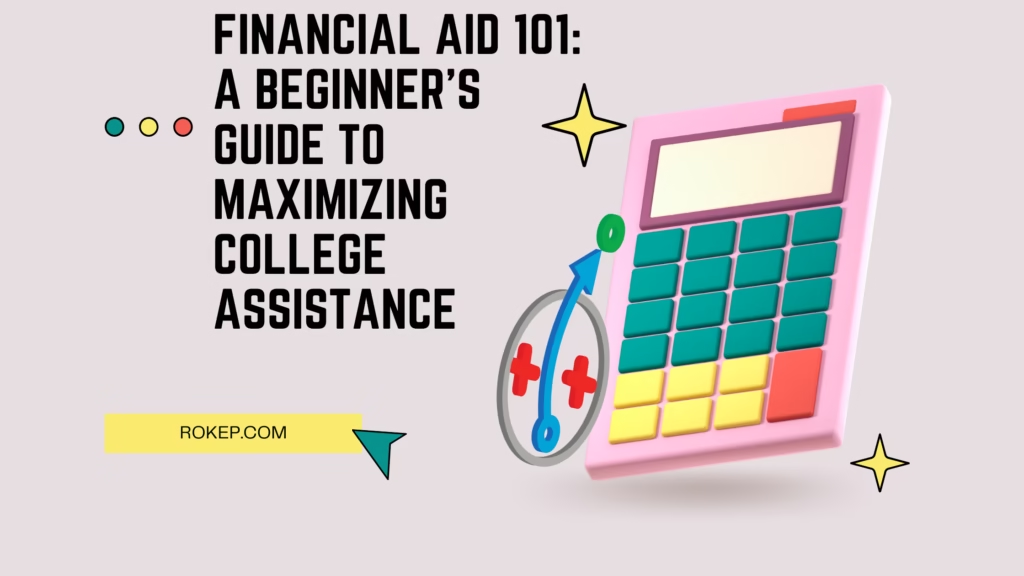Navigating the costs of higher education can be overwhelming, but with proper planning and knowledge of available financial aid options, students and families can make college more affordable. Financial aid includes grants, scholarships, work-study opportunities, and loans. By understanding these resources and how to maximize them, you can significantly reduce the financial burden of pursuing a degree.
This guide provides a comprehensive overview of financial aid basics, steps to secure assistance, and tips for avoiding common pitfalls.
What is Financial Aid?
Financial aid is designed to help students cover education-related costs, including tuition, fees, books, and living expenses. There are four primary types of financial aid:
- Grants: These are typically need-based and do not require repayment.
- Scholarships: Merit-based or need-based awards that also don’t require repayment.
- Work-Study Programs: Part-time employment opportunities designed to help students earn money for educational expenses.
- Loans: Borrowed funds that must be repaid, often with interest, though federal loans offer more favorable terms compared to private ones.
Accessing these forms of aid often begins with completing the Free Application for Federal Student Aid (FAFSA), which evaluates your financial situation to determine eligibility.
The Importance of Completing the FAFSA
The FAFSA is the key to unlocking most financial aid opportunities. Submitting it is a critical step for students seeking funding for their education. Here’s why the FAFSA is essential:
- Federal Aid: Determines eligibility for Pell Grants, work-study programs, and federal student loans.
- State Aid: Many state grant and scholarship programs rely on FAFSA data.
- Institutional Aid: Colleges and universities often use FAFSA information to award school-specific scholarships or need-based aid.
How to Complete the FAFSA:
- Create an FSA ID: This unique identification allows you to securely access and sign your FAFSA form online.
- Gather Required Documents: These include Social Security numbers, tax returns, W-2 forms, and bank statements.
- Submit Early: While the federal deadline for the 2024–25 academic year is June 30, 2025, many states and colleges have earlier deadlines. Early submission increases your chances of receiving aid that is distributed on a first-come, first-served basis.
For details and deadlines, visit the official FAFSA website.
Types of Federal Financial Aid
- Grants
Federal grants are the backbone of financial aid for students with demonstrated financial need:- Pell Grants: Awarded to undergraduates with significant financial need, with a maximum award of $7,395 for the 2023–24 academic year.
- Federal Supplemental Educational Opportunity Grants (FSEOG): Available to students with extreme financial need at participating schools. Learn more about these grants on the Federal Student Aid website.
- Work-Study Programs
Work-study programs provide part-time employment, often on campus, to help students cover education-related expenses. These jobs are designed to accommodate academic schedules, ensuring students can balance work and studies. Visit the Work-Study Program page for more information. - Federal Loans
Federal loans are often necessary to bridge the gap between grants, scholarships, and total college costs. They include:- Direct Subsidized Loans: For undergraduates with financial need; interest is covered by the government while the student is in school.
- Direct Unsubsidized Loans: Available to undergraduate and graduate students regardless of need; interest accrues immediately.
- PLUS Loans: For parents or graduate students to help cover remaining costs.
Institutional and State Aid
Many colleges and states offer additional financial aid programs. Here’s how to take advantage:
- Institutional Aid
Schools often have their own scholarships, grants, or tuition reduction programs. These can include:- Merit-Based Scholarships: Based on academic achievement or special talents.
- Need-Based Grants: Calculated using FAFSA data to help students with financial hardships.
- Check with your school’s financial aid office for opportunities specific to your institution.
- State Programs
States administer their own grant and scholarship programs, often requiring FAFSA submission as part of the application process. For example:- Cal Grants: Available to California residents meeting GPA and income requirements.
- Texas Tuition Equalization Grants: For students attending private colleges in Texas.
- Research your state’s programs via the National Association of State Student Grant and Aid Programs.
Scholarships: Free Money for College
Scholarships are one of the most sought-after forms of aid because they don’t require repayment. They can be awarded for academics, athletic achievements, artistic talent, community service, or specific fields of study.
Tips for Finding and Applying for Scholarships:
- Start Early: Many scholarships have deadlines as early as the fall of your senior year of high school.
- Use Online Resources: Websites like Fastweb and Scholarships.com are excellent for finding scholarships tailored to your qualifications.
- Leverage Local Opportunities: Many community organizations, nonprofits, and local businesses offer scholarships.
- Customize Applications: Tailor your essays and application materials to each scholarship, highlighting why you’re a strong candidate.

Avoiding Financial Aid Scams
Unfortunately, not all offers of financial aid are legitimate. Here are some warning signs:
- Fees: Legitimate scholarships and aid programs do not charge application fees.
- Guaranteed Money: Be wary of promises that you’ll “definitely” qualify for aid.
- Pressure to Act Quickly: Scammers often create a false sense of urgency.
For more tips, visit USAGov’s Financial Aid Scams Guide.
Maximizing Your Aid Package
To get the most out of your financial aid options, consider these strategies:
- Submit Early: Some programs have limited funding and operate on a first-come, first-served basis.
- Appeal Awards: If your financial situation changes, contact your school’s financial aid office to request a review.
- Research State-Specific Aid: Many states offer grants and scholarships that complement federal aid.
- Explore Private Aid: Organizations like Rotary Clubs, businesses, and professional associations often provide additional scholarships.
The Importance of Financial Literacy
Understanding loans and budgeting are critical for managing your financial aid. Borrow only what you need, as excessive loans can lead to long-term debt. Federal loans typically offer lower interest rates and flexible repayment plans compared to private loans. To explore repayment options, visit the Federal Student Aid Loan Repayment page.
Budgeting during college is equally important. Tools like apps or spreadsheets can help track spending, ensuring you stay within your financial means while focusing on your studies.
Conclusion
Securing financial aid is a multi-step process, but the rewards are well worth the effort. Start by completing the FAFSA, researching institutional and state programs, and applying for scholarships. Avoid scams and use financial literacy skills to manage aid effectively. With preparation and persistence, you can reduce the financial strain of college and focus on achieving academic success.
For more guidance, visit StudentAid.gov, your one-stop resource for federal financial aid information.
